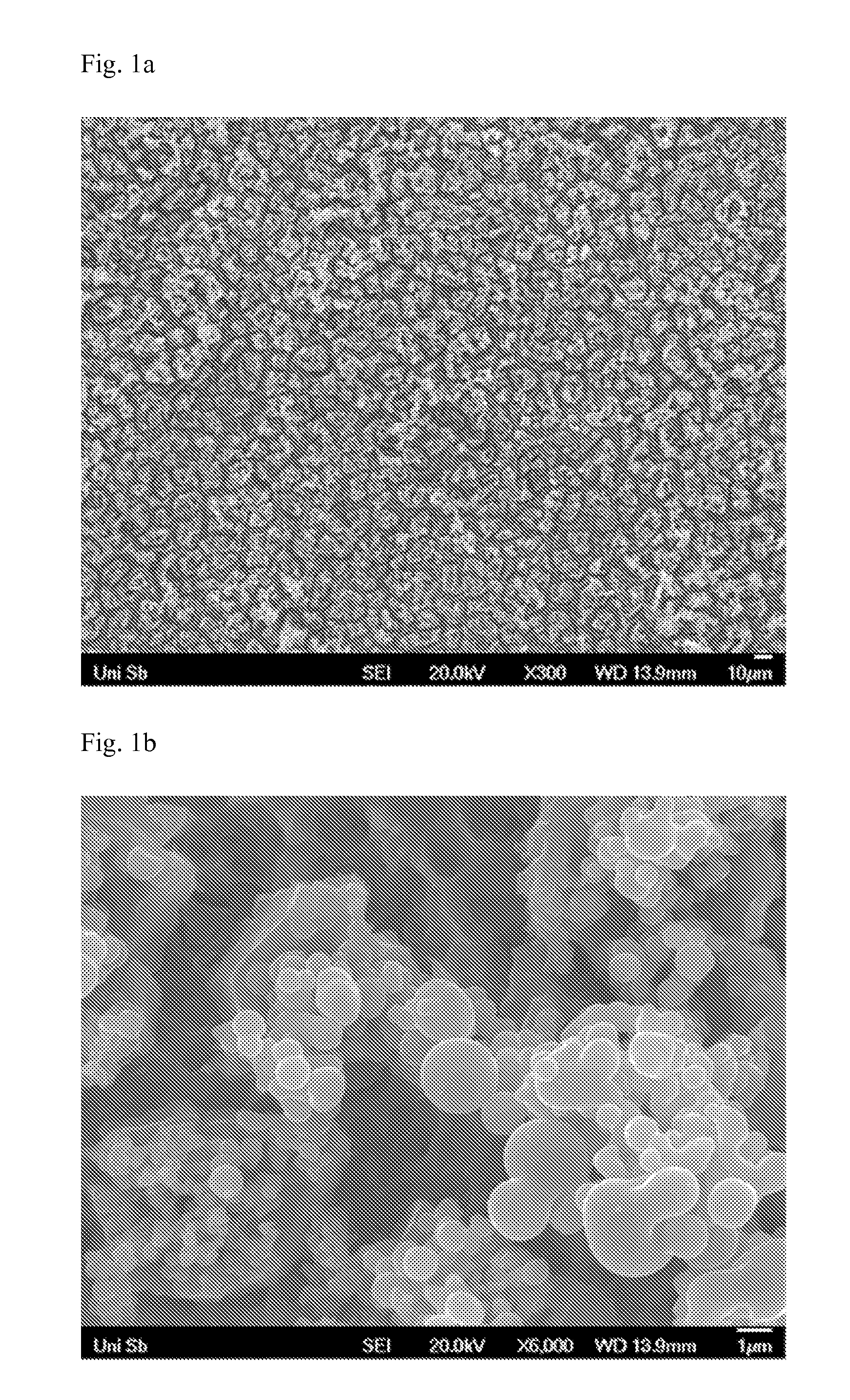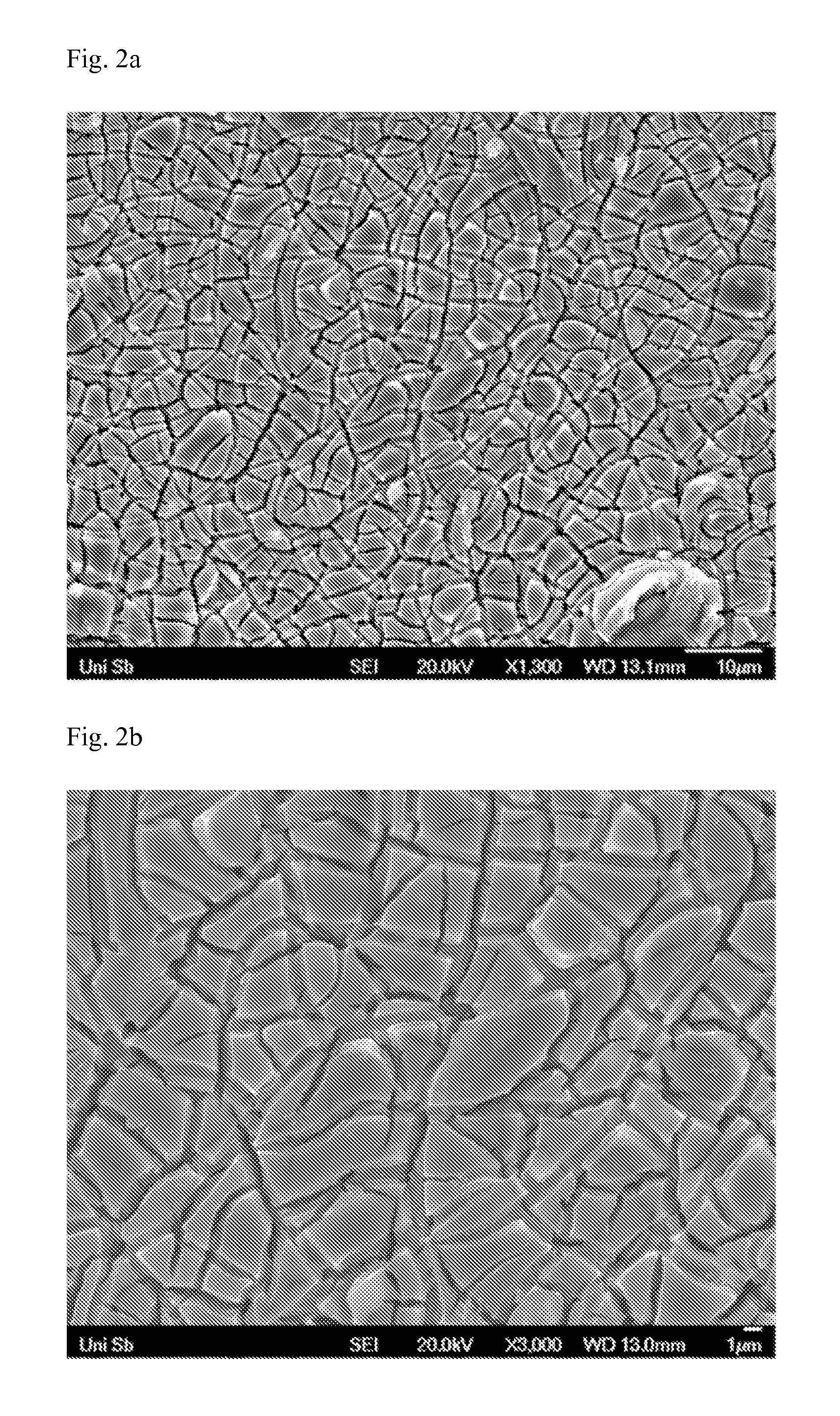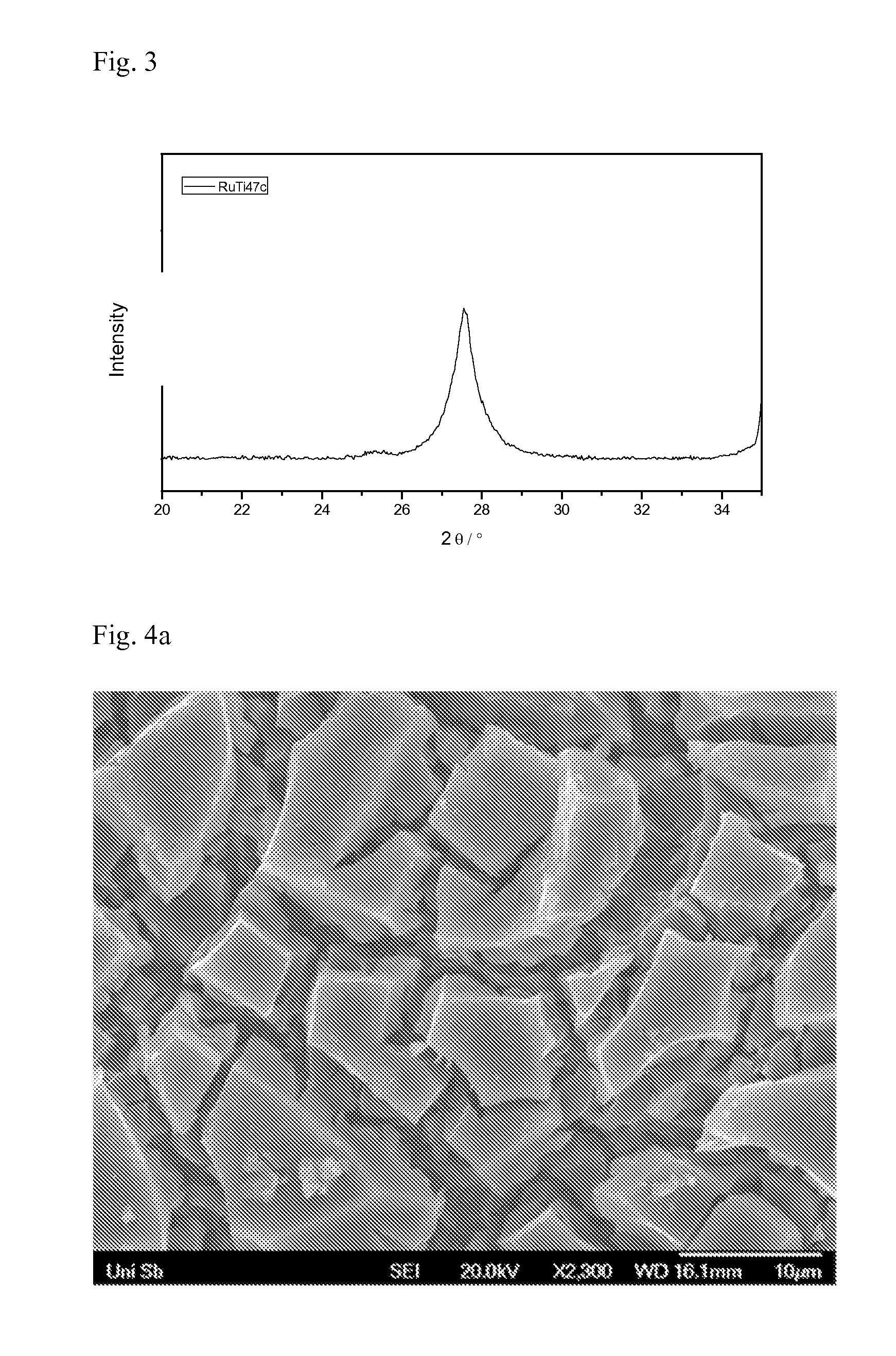Catalyst coating and process for producing it
a catalyst coating and catalyst technology, applied in the direction of electrode coatings, physical/chemical process catalysts, cell components, etc., can solve the problems of reducing affecting the adhesion of the coating to the support, so as to reduce the number of calcination steps and reduce the noble metal content
- Summary
- Abstract
- Description
- Claims
- Application Information
AI Technical Summary
Benefits of technology
Problems solved by technology
Method used
Image
Examples
example 1a
[0097]The titanium electrode in the form of a plate having a diameter of 15 mm and a thickness of 2 mm is pretreated by sand blasting and chemical pickling (at 80° C. in 10% strength by weight oxalic acid for 2 hours).
[0098]The deposition bath contains isopropanol (i-PrOH) and water in a volume ratio of 9:5, 63 millimol / litre of titanium(IV) chloride (63 mM / 1 of TiCl4), 15 millimol / litre of ruthenium(III) chloride (15 mM / 1 of RuCl3), 20 millimol / litre of hydrochloric acid (20 mM / 1 of HCl) and 12 millimol / litre of sodium chloride (12 mM / 1 of NaCl).
[0099](The alcohol / water ratio indicated in the example is the final ratio which is to be obtained after addition of all salts and acids.) Electrodeposition is carried out in a 3-electrode system in a 1-compartment cell. Working electrode and counter electrode are arranged in parallel at a spacing of 40 mm. The reference electrode is located about 2 mm above the working electrode. Deposition is carried out cathodically at the working electr...
example 1b
Example: Reworking of a literature synthesis for TiO2—RuO2 / Ti coatings
[0110]Preparation of a TiO2—RuO2 mixed oxide on titanium according to the literature example. In Journal of Materials Science, 1999, 34, pages 2441-2447, I. Zhitomirsky describes for the first time simultaneous electrochemical deposition of TiO2 and RuO2, where the two components are deposited as mixed oxides. The same synthesis may also be found in further publications (I. Zhitomirsky, Journal of the European Ceramic Society, 1999, 19, pages 2581-2587 and I. Zhitomirsky, Advances in Colloid and Interface Science, 2002, 97, pages 279-317).
[0111]A bath consisting of methanol, water, ruthenium(III) chloride (RuCl3), titanium(IV) chloride (TiCl4) and hydrogen peroxide (H2O2) is used in this electrosynthesis. At cathodic current densities of −20 mA / cm2, TiO2—RuO2 layers are successively deposited as multilayer (according to I. Zhitomirsky in Journal of Materials Science, 1999, 34, pages 2441-2447).
[0112]The titanium e...
example 1c
TiO2—RuO2 Mixed Oxide Prepared by Thermal Decomposition
[0129]To produce a coating by thermal decomposition, a coating solution containing 2.00 g of ruthenium(III) chloride hydrate (Ru content: 40.5% by weight), 21.56 g of n-butanol, 0.94 g of concentrated hydrochloric acid and 5.93 g of tetrabutyl titanate Ti—(O-Bu)4) was prepared. Part of the coating solution was applied by means of a brush to a titanium plate which had previously been pickled in 10% strength by weight oxalic acid at about 90° C. for 0.5 hour. This was dried after application of the coating for 10 minutes at 80° C. in air and subsequently treated at 470° C. in air for 10 minutes. This procedure (application of solution, drying, heat treatment) was carried out a total of eight times. The plate was subsequently treated at 520° C. in air for one hour. The ruthenium area loading was determined from the consumption of the coating solution and found to be 16.1 g / m2, at a composition of 31.5 mol % of RuO2 and 68.5 mol % o...
PUM
| Property | Measurement | Unit |
|---|---|---|
| Temperature | aaaaa | aaaaa |
| Temperature | aaaaa | aaaaa |
| Percent by mass | aaaaa | aaaaa |
Abstract
Description
Claims
Application Information
 Login to View More
Login to View More - R&D
- Intellectual Property
- Life Sciences
- Materials
- Tech Scout
- Unparalleled Data Quality
- Higher Quality Content
- 60% Fewer Hallucinations
Browse by: Latest US Patents, China's latest patents, Technical Efficacy Thesaurus, Application Domain, Technology Topic, Popular Technical Reports.
© 2025 PatSnap. All rights reserved.Legal|Privacy policy|Modern Slavery Act Transparency Statement|Sitemap|About US| Contact US: help@patsnap.com



